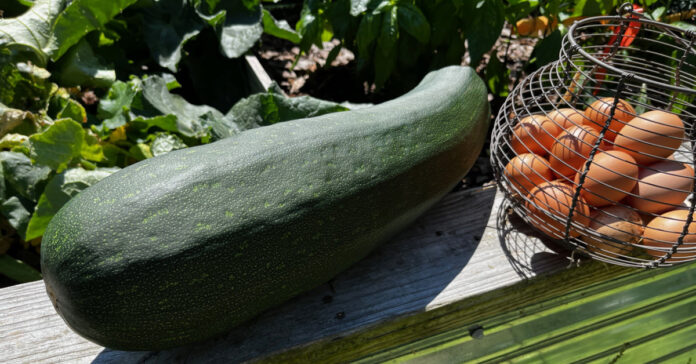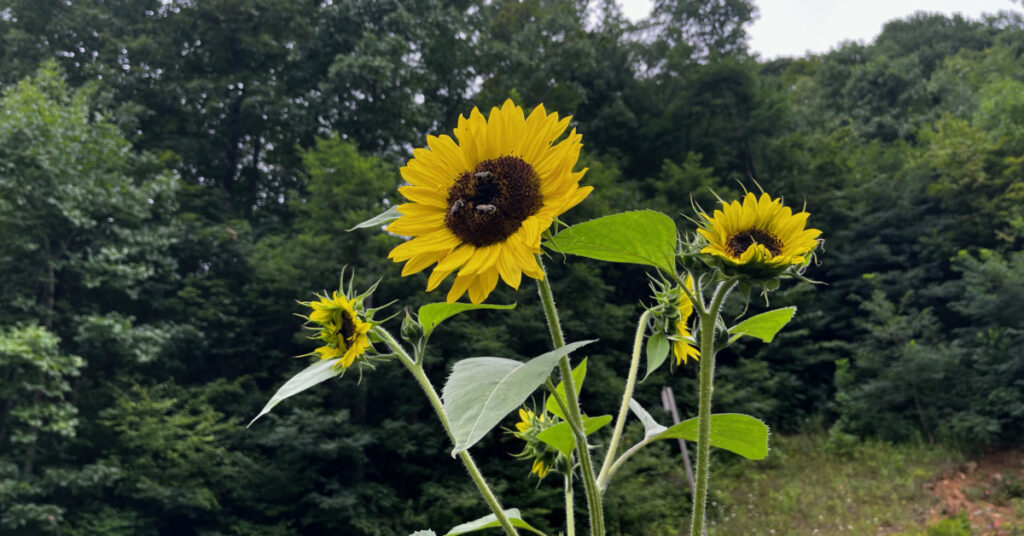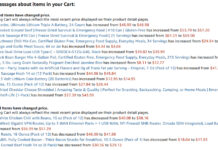
Note: The storm hasn’t affected us yet, so I am able to post this. We’re getting some early rain, but the worst is yet to come.
Inflation is Everywhere
My 88-year-old neighbor, who is on a fixed income, complained that just about everything in the grocery store cost him $5 or more. I was in Walmart the other day, and sure enough, a bag of jelly beans on a display near checkout was $4.84. For Jelly beans? Seriously? It’s not even Easter.
Walmart had stuff on sale for $1, but it was a bottle of hydrogen peroxide or their house brand of ibuprofen. Very little food was available for less than $5. As a result, my neighbor eats a lot of hot dogs because they are inexpensive, filling, and easy to cook. I find that a bit sad.
When my wife cooks us a big meal, she packages up a portion of it for him and sticks it in the freezer. We find an excuse to deliver a care package to him every couple of weeks. We also give him a dozen eggs. He often hard boils them.
On my last trip to Walmart, I bought a 25-pound bag of sugar for $19.97. That is 5 cents per ounce, which sounds cheap, but it’s about twice as expensive as it was five years ago. Still, a pound of sugar is 80 cents, while I sell a pound of honey for $15. I guess I can’t complain.
(To be clear, the bees do not turn the sugar into honey, and I do not feed while honey supers are on the hive. I feed the bees sugar water in the spring to encourage the queen to lay and to help them build wax. I feed them sugar syrup in the fall to help the bees make enough honey to survive the long winter. If I didn’t harvest all their summer honey, this feeding would not be necessary.)
An $8 Lemonade
Before the recent Wall Street sell-off, we went to a street festival in a large town located down the mountain. We were planning to eat there. A quesadilla at a food truck was $14. A fresh-squeezed lemonade was $8. Give me a break! Eight dollars for a plastic cup into which water, a scoop of sugar, some ice and the contents of a lemon were squeezed? That seemed ridiculous to me. (Maybe these are normal prices for you, but I can promise you that out here in the Appalachians, that’s expensive.)
I heard festival vendors grousing to each other about the low turnout. I ran into an exhibitor I know through beekeeping. He said he was expecting sales of $4,000 based on prior years, so he brought enough goods to sell $6,000 worth, just in case. He took most of them home, barely making $1,000 in sales.
The weather was good, so that wasn’t it. We figured it was the economy. People didn’t have $8 to spend on lemonade or $60 for a wooden cutting board.
Hardworking craftsmen who lose out on sales because of lower consumer confidence are an example of the trickle-down recession you don’t see in government reports.
Home Grown Food
We continue to get plenty of veggies from our garden, plus eggs and honey from our livestock. I have eggs for breakfast every day and we are eating zucchini four times a week, more if you count zucchini bread. Zucchini bread and green beans are filling up the freezer, so we’ll have something to enjoy this fall and winter.
If you have ever had a garden, you know how one zucchini always seems to hide away under the plant’s large foliage. We found one that weighed eight pounds, the size of a newborn. I fed half of it to the chickens one day and the other half the next. They love zucchini so much that I have to throw multiple pieces into their run at the same time so they don’t fight over it.
I have also been gathering apples that have fallen from the local trees. I cut them in half and toss them to the chickens as well. They like apples, but not as much as the zucchini. We have many months of apples ahead of us, followed by pumpkins.

The sunflowers, all taller than I, are finally blooming with big yellow flower heads. We’ll save some seeds for next years, but most of the seed heads will be fed to the chickens this winter. The Sunflowers are a good plant for us because the bees like them, the chickens eat the seeds, and we can eat the seeds, too. The seeds are one of the few plant sources of fat we grow, and preppers need fat in their diet.
I have gotten scratched up picking wild blackberries, but the late-summer ones are the sweetest. The ones I don’t eat go into the freezer and make strategic appearances over the winter.
Honey Sales
Not only does eating our home-grown food and the berries and apples we pick help reduce our food costs, it helps us generate money.
I often make between $60 to $120 a week selling eggs and honey. In fact, I am out of quart jars from June’s harvest, which sell for $40 each. That kind of income isn’t much these days, but it’s enough extra cash in my pocket to make a noticeable difference. For example, I am more willing to grab a bite to eat while I am out if I just sold $90 worth of honey and eggs. It also keeps me from going to the ATM and withdrawing cash.
When I worked in the city, I tried to spend only $5 or $6 to buy lunch. It wasn’t always possible, but it could be done more often than not. Five years later, I find the least expensive lunches run about $12. I expect that would be $15 or more in the city. With that kind of inflation, it’s no wonder people are not eating out as much, contributing to the closure of many small restaurants.
We have found that the 80/20 rule applies to honey and egg sales, meaning 20 percent of our customers account for 80 percent of our sales. One customer buys a dozen eggs every week and has purchased three quarts of honey so far this year. Another has already purchased four quarts and has an order in for more after our next harvest. Finally, once a month an acquaintance of my wife who lives down the mountain buys five or six dozen eggs all at the same time. These are the kind of customers we want.
Firewood
I think I am that kind of customer for my firewood supplier, because I buy seven trailer loads of mixed hardwoods a year.
This past week, some of my honey money went to buy another load of firewood. (FYI, when I start writing about firewood, it’s a sure sign that winter is coming.) This load has a good amount of red oak, some very nice cherry, a bit of hickory, and a few logs I didn’t recognize. They were also split small enough that I didn’t need to re-split any of them. I think they split the wood smaller in the summer because it is used in fire pits and larger in the winter when it goes for heating.
If all goes according to plan, I won’t burn this latest load of firewood until March or April.
Here’s my firewood plan for this winter:
| October and November | Burn leftover wood that was not needed last year. This wood was purchased in August 2022 and is super dry. It should burn fast. The winter of 2023/24 was the first one in which we had more wood than we needed. |
| December through March | Burn wood we purchased between December and May of this year. This wood has been stored in a shelter, meaning very little rain has fallen on it but the wind has helped dry it. This will be good for long, hot fires. |
| April and possibly May | If we use up all the older firewood I have on hand, we’ll burn the latest load next spring. It will be 9 months old by then and should be seasoned enough to burn well. |
Every time I burn all the wood in a storage bay, I buy another cord. This helps ensure I always have at last a year’s worth of firewood on hand.
Gifts of Honey
The firewood man went home with a pound of honey, gratis. When I get my haircut, my barber will get one, too. In fact, he may get a zucchini or two as well. I also give honey to neighbors.
When I started giving honey away, I did so because it’s a friendly thing to do, and I was proud to show off my first harvest. I have since found that people not only remember you when you give them a pound of honey, but it creates a very favorable impression. No longer am I “that guy from off-the-mountain,” I am now “that guy who gives me honey every year.” I will never be able to connect to locals like the people they grew up and went to high school with, but it differentiates me in a positive way.
Out here in the mountains, many locals will say, “My grandad used to keep bees,” and they remember it fondly. Unfortunately, the days of easy, carefree beekeeping ended when the invasive Varroa Destructor mite came over from Asia and starting wiping out beehives. It made beekeeping more work, more expensive, and required beekeepers to stay on top of the latest beekeeping science and research. As a result, there are far fewer casual beekeepers today than there were a couple of generations ago. I think my gift of honey reminds them of these happy bygone days.
I’d give honey to my friends, neighbors, and tradesmen with whom I do repeat business regardless, but building a positive relationship is a nice bonus.






